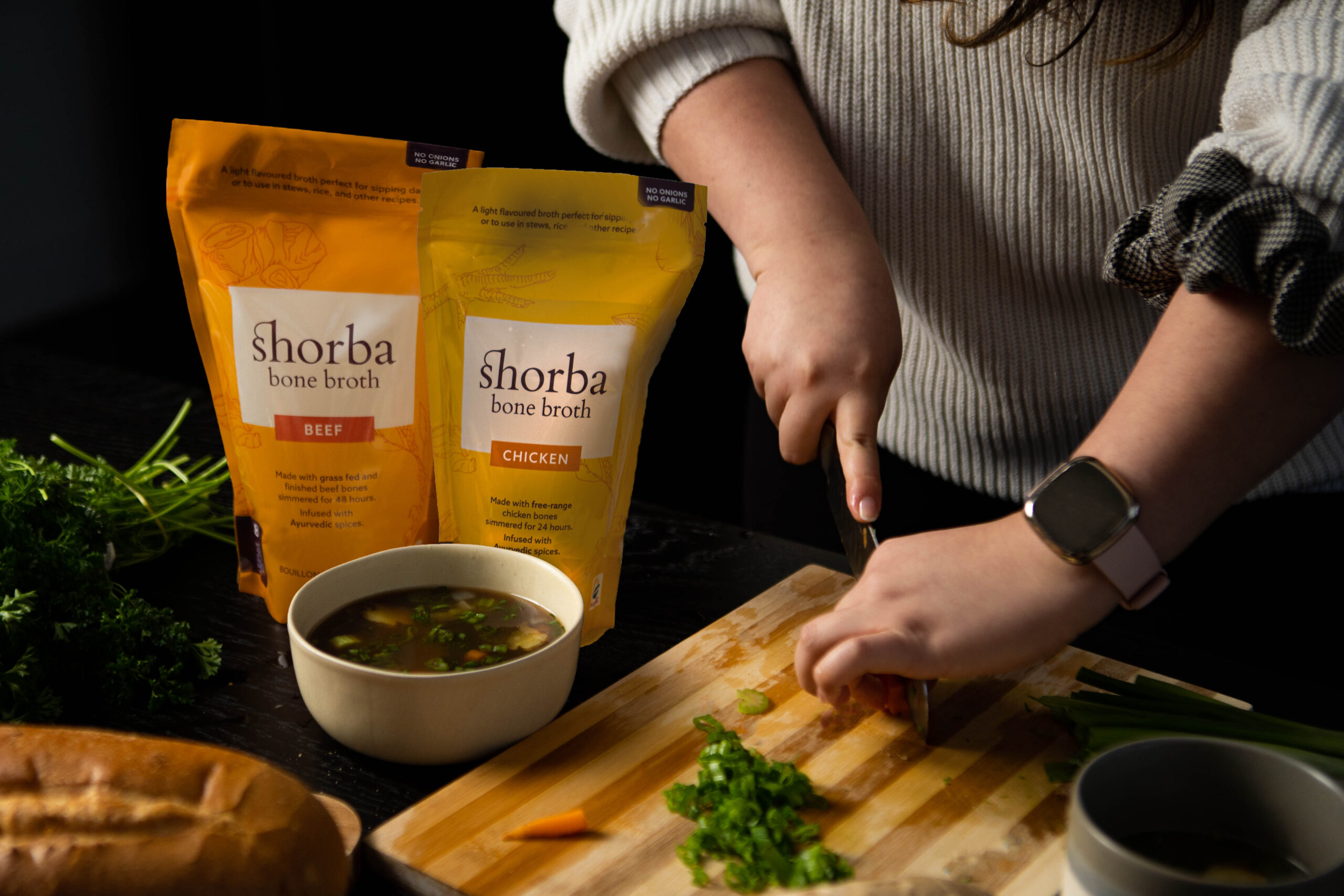How Often Should You Use Bone Broth Delivery? Weekly vs. Monthly Plans
How Often Should You Use Bone Broth Delivery? Weekly vs. Monthly Plans
Blog Article
The Ultimate Guide to Making and Delighting In Organic Bone Broths in the house
Bone brew has actually gotten attention for its numerous health and wellness advantages and cooking versatility. Crafting organic bone broth in the house enables individuals to regulate the quality of active ingredients, ensuring a nourishing end result. Understanding the option of bones, crucial flavor elements, and correct food preparation strategies is important. As the procedure unfolds, one may ask yourself just how to raise their brew past the basics and include it into everyday meals for improved taste and nourishment.
Understanding the Health And Wellness Benefits of Bone Brew
Although bone brew has actually been a staple in numerous cuisines for centuries, its health advantages have gained significant interest recently. Rich in collagen, amino acids, and minerals, bone broth is typically touted for its prospective to support joint health and wellness, boost intestine function, and enhance skin elasticity. The gelatin stemmed from prepared bones may aid food digestion and assistance seal the digestive tract lining, potentially reducing concerns like leaky intestine syndrome.Furthermore, the presence of nutrients such as glucosamine and chondroitin may contribute to minimized swelling and discomfort relief in joints. Furthermore, bone broth is moistening and can offer as a nutritious base for stews and soups. Lots of proponents also declare that it increases the immune system, thanks to its mineral account. Generally, the renewal of passion in bone broth is linked to its perceived ability to advertise total health and assistance various physical features.
Choosing the Right Bones for Maximum Flavor and Nourishment
What elements should one think about when selecting bones for broth preparation? The kind of bones utilized significantly influences both taste and nutritional value. First, it is important to choose bones that include a mix of marrow bones, joint bones, and weighty bones. Marrow bones give abundant tastes and healthy and balanced fats, while joint bones contribute collagen, boosting the brew's nutritional profile.Additionally, sourcing bones from pasture-raised or grass-fed animals assurances better and even more nutrients, as these animals are generally much healthier. The quality of the bones is also essential; choosing bones from regional butchers or farmers' markets can assure ideal taste. Bone size matters as well; larger bones release more gelatin, leading to a richer brew. Lastly, thinking about the kind of animal-- chicken, fish, or beef-- can influence the last preference, enabling for functional broth alternatives tailored to private choices.
Necessary Active Ingredients for a Flavorful Bone Brew

Quality Bone Choice
The structure of a flavorful bone broth hinges on the mindful selection of premium bones. Sourcing organic, pasture-raised or grass-fed bones is essential, as these alternatives are more probable to be cost-free from dangerous ingredients and give premium nutrients. Selections such as beef, chicken, or lamb bones each pass on distinctive tastes and health and wellness benefits. Bone kinds, including marrow bones, knuckle bones, and oxtails, contribute jelly and collagen, enhancing the broth's structure. Choosing bones with a mix of meat and connective tissue can also include richness and depth. Furthermore, choosing bones with visible marrow assures a nutrient-dense brew, elevating the general quality. Inevitably, investing time in high quality bone selection prepares for a tasty and beneficial broth.
Fragrant Flavor Enhancers
Picking top notch bones sets the stage for a healthy and rich bone brew, yet it is the enhancement of fragrant taste boosters that absolutely elevates the recipe. Active ingredients such as onions, garlic, and carrots not just pass on sweetness yet also contribute depth to the brew. Fresh natural herbs like bay, thyme, and parsley leaves add an aromatic note, while flavors such as black peppercorns and cloves present heat and intricacy. Additionally, including a dash of apple cider vinegar can help extract minerals from the bones, enhancing the brew. These flavor enhancers produce a harmonious blend, changing an easy brew right into a full-flavored structure for stews, sauces, or soups, making it a flexible part in any kind of cooking repertoire.
Step-by-Step Overview to Making Bone Broth at Home
Producing bone broth in your home can be a satisfying culinary undertaking that improves both taste and nutrition in numerous meals. To begin, one need to choose top quality bones, preferably from grass-fed or organic resources. Toasting the bones at 400 ° F for concerning thirty minutes can escalate the taste. Next, transfer the roasted bones to a large pot or slow cooker and cover them with cool water. Including a dash of vinegar helps extract minerals from the bones.Include fragrant vegetables like onions, carrots, and celery for added deepness, together visit site with natural herbs and seasonings as preferred. Bring the combination to a boil, then decrease to a simmer. It is vital to let the broth simmer for a minimum of 12 hours, however longer is preferable for maximum splendor. Lastly, pressure the broth via a fine-mesh screen and shop it in impermeable containers, all set to boost dishes with its healthy essence.

Tips for Improving Your Bone Brew Simmer
While simmering bone brew, maintaining the appropriate temperature and timing is essential for accomplishing a abundant and flavorful outcome. A gentle simmer, preferably between 190 ° F and 210 ° F, aids remove maximum nutrients and tastes without boiling, which can make the broth cloudy. It is recommended to monitor the pot carefully, changing the heat as needed to preserve this simmer.Timing is also vital; a longer simmer, commonly ranging from 12 to 2 days, enables deeper flavor removal and collagen launch. For hen bones, a 12 to 24-hour simmer is enough, while beef bones benefit from longer food preparation times.Additionally, skimming off any foam or pollutants that climb to this page the surface during the very first few hours can boost the brew's quality and taste. Lastly, guaranteeing the pot is covered throughout simmering assists to keep dampness and magnify the flavors, producing an extra gratifying end item.
Creative Ways to Use Bone Broth in Your Food preparation
Incorporating bone brew into different dishes elevates both flavor and dietary worth. Cooks and home cooks alike find that using bone brew as a base for stews and soups boosts depth and richness, transforming simple recipes into passionate dishes. It can likewise be employed in risottos, where the broth changes water, permitting the grains to absorb its full-flavored essence.Additionally, bone broth acts as an excellent food preparation fluid for grains like quinoa or rice, instilling them with nutrients and flavor. For an included spin, it can be utilized in braising meats, causing tender, savory outcomes. Also sauces profit from a sprinkle of bone broth, enriching their taste profile.Moreover, bone broth can be incorporated right into shakes for an unanticipated health increase, giving protein and nutrients without jeopardizing preference. These innovative applications display the versatility of bone broth in everyday cooking, making it an indispensable kitchen staple.
Saving and Maintaining Your Home Made Bone Brew
Proper storage and preservation of homemade bone brew is essential for preserving its taste and dietary benefits. Freezing strategies and refrigeration best practices play an important role in extending the broth's service life. Understanding these approaches can help assure that the brew continues to be scrumptious and secure for future use.

Icing Up Methods Clarified
Freezing methods are crucial for properly keeping and maintaining homemade bone broth, guaranteeing its rich flavors and nutrients remain intact for future use. To use this link freeze bone brew, it is suggested to let it great entirely prior to moving it to storage space containers. Glass jars, silicone mold and mildews, or durable fridge freezer bags appropriate alternatives. When making use of containers, leave room on top for expansion during cold. Portioning the broth right into smaller amounts permits for simple thawing and minimizes waste. Label containers with the date and components for very easy identification. For peak quality, eat the frozen broth within 3 to 6 months - Bone Broth Delivery. Defrosting can be carried out in the refrigerator or by utilizing a microwave, making sure that the brew is heated extensively before intake
Refrigeration Best Practices
While lots of concentrate on cold as an approach of conservation, refrigeration also plays an important role in keeping homemade bone brew properly. Once cooled, bone broth must be moved to impermeable containers, guaranteeing minimal air exposure to avoid wasting. It is advisable to cool broth within 2 hours of food preparation to preserve its quality. Typically, homemade bone brew can be kept in the refrigerator for as much as 5 days. Classifying containers with dates can assist track quality. For peak flavor and security, brew must be reheated to a moving boil prior to consumption. If longer storage space is needed, cold remains an exceptional alternative, but appropriate refrigeration techniques guarantee that bone brew remains delicious and healthy for temporary usage.
Frequently Asked Questions
Can I Utilize Frozen Bones for Making Bone Brew?
The question of utilizing frozen bones for bone brew emerges often (Chicken Broth). Experts agree that frozen bones can be made use of efficiently, yet they should be defrosted before cooking to ensure excellent flavor and nutrient extraction
For How Long Can I Store Homemade Bone Broth?

Is It Safe to Reheat Bone Broth Several Times?
Reheating bone brew multiple times can present safety and security problems - Bone Broth Delivery. Each reheating cycle enhances the threat of bacterial development. It is recommended to reheat just when and keep any leftovers quickly to assure safety and security and top quality
Can I Include Vegetables to the Brew for Taste?
Adding vegetables to broth enhances taste and dietary value. Usual selections include carrots, onions, and celery. The veggies instill their significance right into the brew, developing a richer and much more savory last product.
What's the very best Method to Defrost Icy Bone Broth?
To defrost icy bone brew, one can place it in the refrigerator over night, use a microwave on reduced warmth, or immerse the sealed container in warm water, guaranteeing even defrosting without endangering flavor or nutrients. It is important to pick bones that include a mix of marrow bones, joint bones, and weighty bones. Marrow bones supply abundant tastes and healthy fats, while joint bones add collagen, enhancing the broth's dietary profile.Additionally, sourcing bones from pasture-raised or grass-fed animals guarantees greater high quality and even more nutrients, as these animals are typically much healthier. Bone types, including marrow bones, knuckle bones, and oxtails, contribute jelly and collagen, boosting the brew's appearance. Selecting top notch bones sets the phase for a nutritious and rich bone brew, but it is the enhancement of aromatic taste boosters that absolutely raises the dish. Also sauces profit from a splash of bone brew, improving their preference profile.Moreover, bone brew can be integrated right into healthy smoothies for an unanticipated wellness boost, providing protein and nutrients without jeopardizing preference.
Report this page